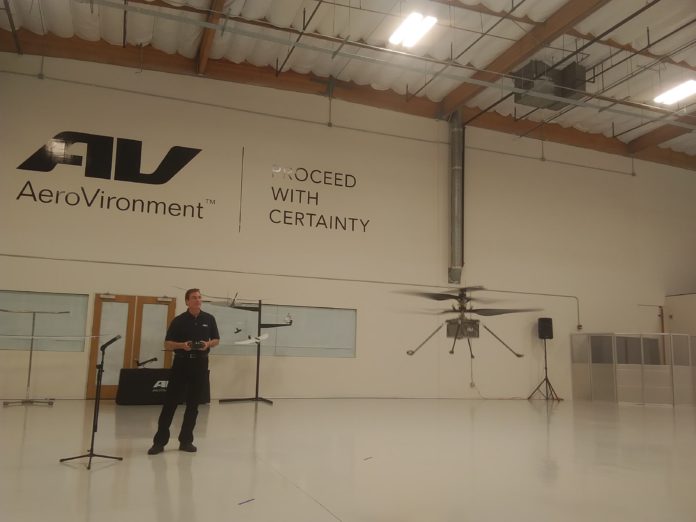Engineers at AeroVironment Inc. showed off on Thursday the company’s terrestrial version of the helicopter it developed for NASA’s mission to Mars.
Nicknamed Terry, the terrestrial aircraft was flown for members of the media by Matt Keennon, the technical lead for rotor system development on the Mars Ingenuity helicopter program at the Moorpark facility of the Simi Valley unmanned aircraft manufacturer.Ben Pipenberg, engineering lead on the helicopter program, explained before the flight that Terry has an airframe identical to Ingenuity and that structure composites and mechanism were built from the same molds as the Mars version.
“Terry is designed to fly here on Earth, so the motors were redesigned and are more powerful and have a higher torque to handle the denser atmosphere and the higher gravity,” Pipenberg explained.
Ingenuity has flown five times on the surface of the red planet since its initial flight on April 19 when it became the first aircraft to fly on another world.
AeroVironment Chief Executive Wahid Nawabi said there are many applications that come from Ingenuity that apply to other aircraft in development by the company.As an example he gave the Sunglider, the solar-powered drone that last October reached an altitude of more than 60,000 feet and successfully demonstrated mobile broadband communications. The aircraft’s development and testing is funded by HAPSMobile Inc. a joint venture between AeroVironment and SoftBank Corp., a Japanese telecom and internet company.The Sunglider must be lightweight, just like the Mars helicopter. The large drone, with a wingspan longer than 260 feet, is propelled by 10 electric motors powered by solar panels and is designed for continuous flights of months without landing.“Every single gram of weight that goes into this airplane we have to be able to justify and rationalize,” Nawabi said.
Additionally, there are environmental conditions that are similar between the Sunglider and Ingenuity as well as the communications of both aircraft.
“These are autonomous systems. Nobody really flies (the Mars helicopter). It has to fly by itself,” Nawabi said. “The same thing with the Sunglider. The computers really fly the airplane. So what we learn here or there is cross-applicable to all of our products and businesses.”Shares of AeroVironment (AVAV) closed Friday up $3.05, or 2.9 percent, to $107.28 on the Nasdaq.
